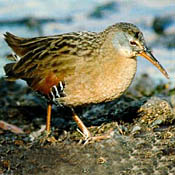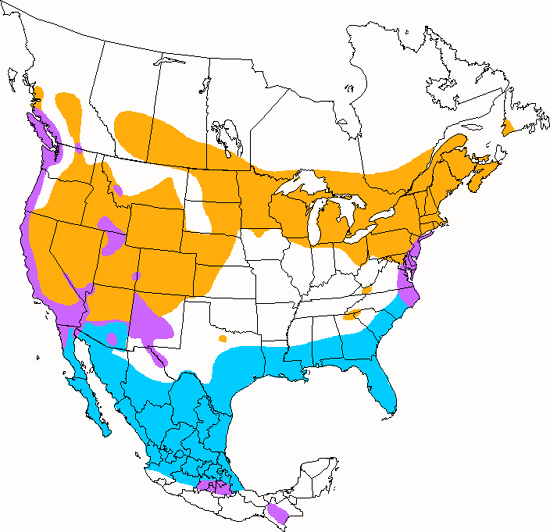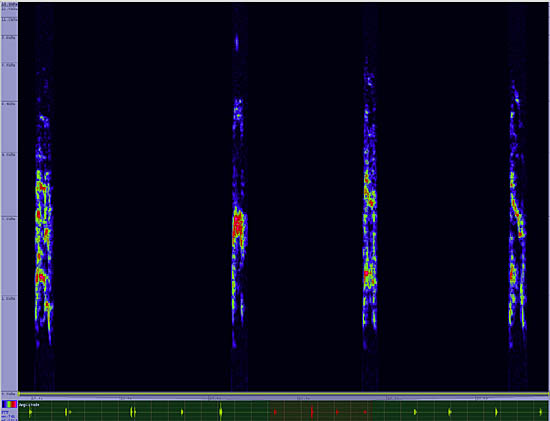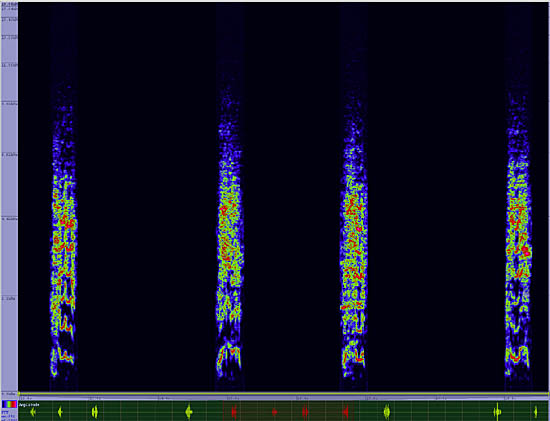Virginia Rail
Rallus limicola

Chicken Like Marsh Bird

Length: 10 in. (24 cm )
Confined to marshy vegetation, the Virginia Rail seldom ventures out into the open except early in the morning. Then it walks and runs boldly across floating aquatic vegetation with its tail cocked up. This rail feeds on aquatic invertebrates, earthworms and some fish. The nest is a layered island of vegetation piled in a dense clump, often on floating vegetation.
The four-digit banding code is VIRA.
Bibliographic details:
- Article: Virginia Rail
- Author(s): Dr. Biology
- Publisher: Arizona State University School of Life Sciences Ask A Biologist
- Site name: ASU - Ask A Biologist
- Date published:
- Date accessed:
- Link: https://askabiologist.asu.edu/activities/bird/virginia-rail
APA Style
Dr. Biology. (). Virginia Rail. ASU - Ask A Biologist. Retrieved from https://askabiologist.asu.edu/activities/bird/virginia-rail
Chicago Manual of Style
Dr. Biology. "Virginia Rail". ASU - Ask A Biologist. . https://askabiologist.asu.edu/activities/bird/virginia-rail
Dr. Biology. "Virginia Rail". ASU - Ask A Biologist. . ASU - Ask A Biologist, Web. https://askabiologist.asu.edu/activities/bird/virginia-rail
MLA 2017 Style
Be Part of
Ask A Biologist
By volunteering, or simply sending us feedback on the site. Scientists, teachers, writers, illustrators, and translators are all important to the program. If you are interested in helping with the website we have a Volunteers page to get the process started.






